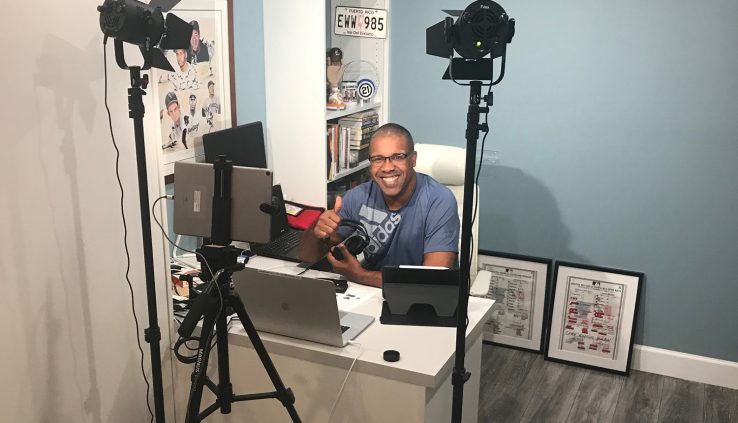From The Jump to Korean Baseball, ESPN’s ‘Live From Home’ Efforts Keep the Content Factory Churning
By Adam Noyes
Since the beginning of the Corona Virus Pandemic, many organizations have had to pivot hard to at working from home- this includes major television stations like ESPN. With the help of SimplyLive’s ViBox and various other live streaming products, production is able to continue.
Check out this highlight from an article from sportsvideo.org to learn more.
When the coronavirus pandemic brought the sports world to an abrupt halt two months ago, ESPN quickly formed a “Live From Home” committee to evaluate options that would allow on-air talent and crew to produce live studio shows from the safety of their own homes. In the months since, efforts by the committee — led by the Remote Operations department and comprising 30+ staffers from several ESPN departments — have resulted in the launch of more than 60 at-home studios for talent, five remote-commentary kits for live KBO League (Korean Baseball Association) telecasts, and a full REMI production workflow for several ESPN studio shows.
ESPN MLB analyst Eduardo Perez prepares for a KBO telecast using the a remote commentary system at his home (credit: Eduardo Perez/ESPN)
“Obviously, we all continue to plan for live sports to return,” says Chris Calcinari, SVP, remote operations, ESPN. “We’re on calls every day with our production partners and our league partners trying to work through scenarios and plans to come back once it’s safe to hold sporting events. But, in the meantime, we’ve been keeping busy coming up with homegrown, innovative solutions that allow our production teams to work from home. And we believe these innovations will prove to be extremely valuable once live sports return.”
‘Live From Home’ Studios: Keeping Commentators Active
ESPN’s Live From Home studios have become the backbone of the network’s studio operations since reduced staffing measures were put in place at ESPN’s Bristol, CT, campus. Although several shows are still being hosted out of the Bristol studios, nearly all analysts and reporters have been outfitted with robust studio facilities at their homes to enable them to contribute to ESPN programs.
ESPN college hoops analyst Jay Bilas using his remote home studio (credit: Shea Byram/ESPN)
“We had a pretty strong network of home studios even before the pandemic happened,” says Shea Byram, senior remote operations manager, ESPN, “but we’ve taken it to the next level now. Thankfully, we had a good system in place, which allowed us to get things done as quickly as possible and get the [studio kits] out to our talent.
When the sports world suddenly shut down on March 12, Byram and her team anticipated an increased need for at-home studios and ordered gear for an additional 30 studio kits.
A three-person team composed of Byram, Senior Remote Operations Coordinator Ryan Bastek, and Remote Ops Coordinator Leah Morgenstern constructed the kits and deployed them to talent throughout the country. In addition, Byram relied on the entire ESPN remote-operations team to perform the installations at commentators’ homes, walking them through the process via Facetime.
ESPN FC soccer analyst Frank Lebeouf’s at-home studio in Paris (credit: ESPN)
“That has been a lifesaver,” says Byram. “Normally, we are out on the road every week installing home studios at different locations. But, as soon as we got our travel ban, we had to enlist the help of everyone else in remote operations. At this point, we have a nice network of installers that are able to help us. We’re still [installing at-home studios] in the Tri-State area ourselves, but we are getting as much help as we can around the country from the rest of the team.”
The sophistication of the kits varies from a simple system comprising an iPads, lighting lights, and a transmission app to higher-end systems that are equipped with an IP-based PTZ camera and a more advanced transmission device for hosts who are on-air for several hours at a time. The 60+ systems installed over the past two months are in addition to ESPN’s pre-existing installations, and the team will continue to deploy more in the coming weeks.

